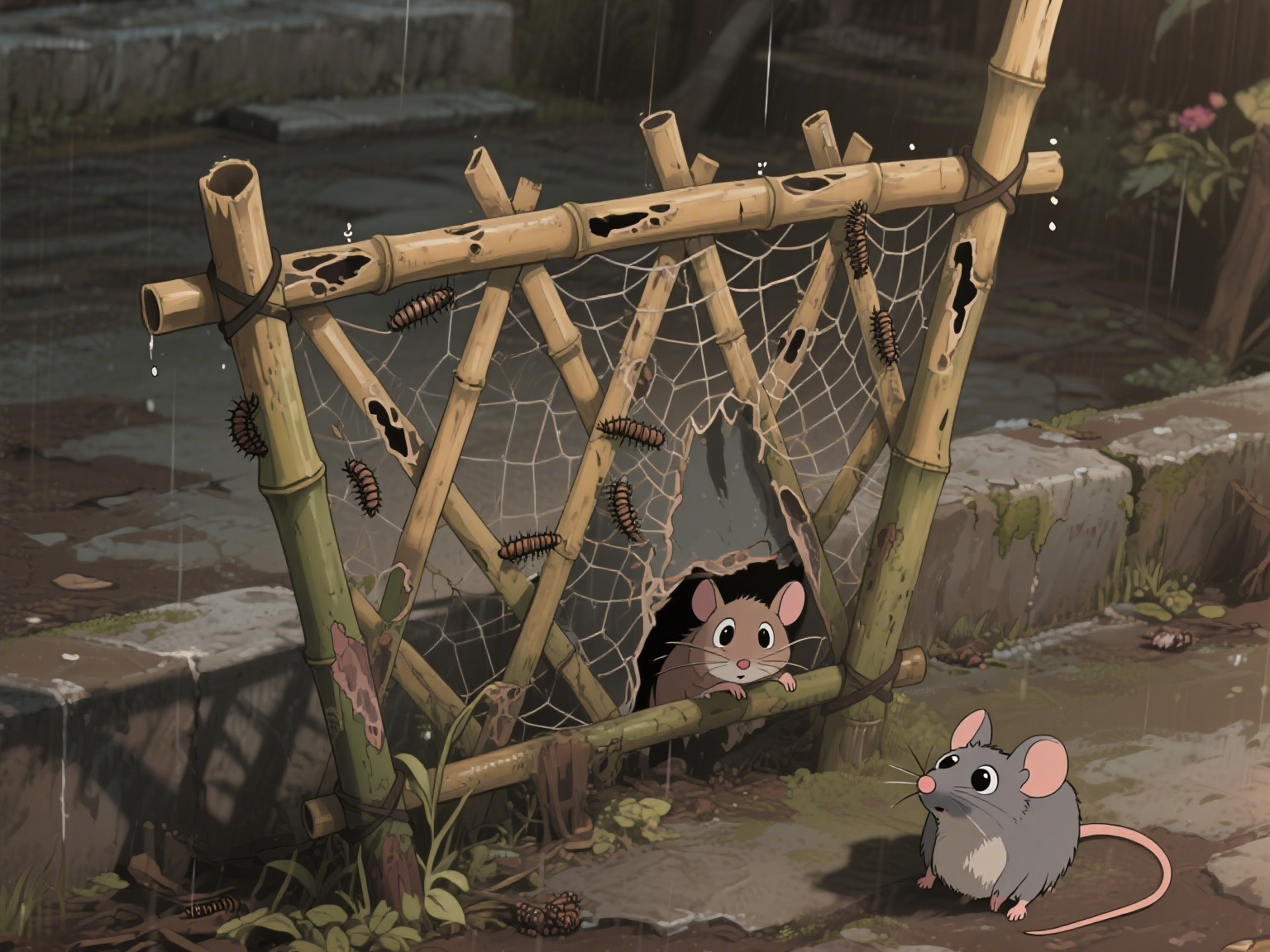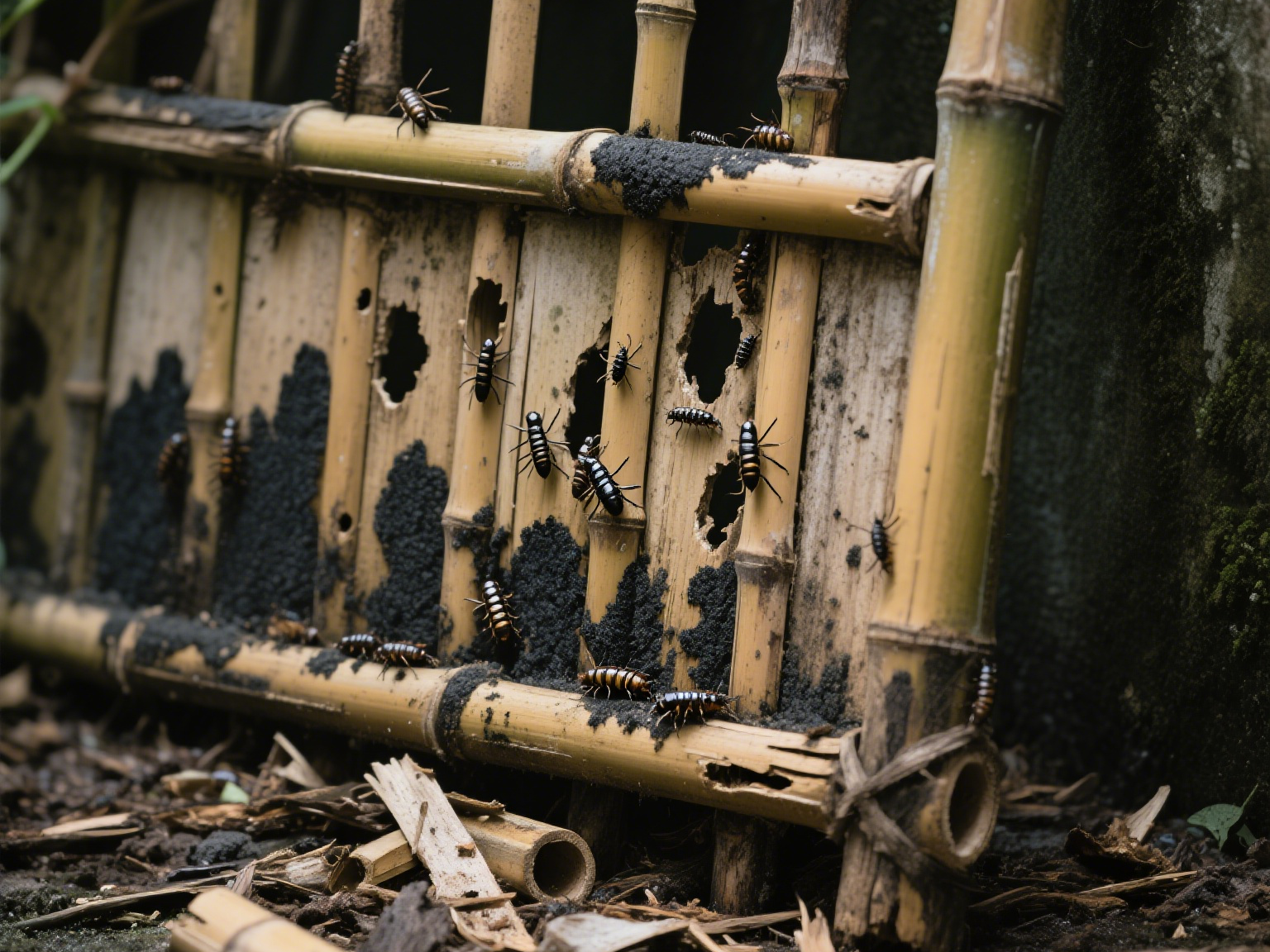In the temple courtyard of Arashiyama, Kyoto, beside the moss-covered dry landscape garden, a bamboo flower rack stands quietly. Its dark brown poles are tied in the traditional well pattern, with a pot of snow-water-cultivated Shirakawa maple at the top, whose red leaves reflect on the gravel, forming a classic image of wabi-sabi aesthetics. However, when the mist of the plum rain season drifts over the stone lantern, a faint green mold has already quietly grown at the base of the rack—this unnoticed green is slowly eroding the poetry of Eastern horticulture.
Kyoto’s summer is a conspiracy of humidity and heat. In air with an average daily humidity of 85%, bamboo becomes a feast for microorganisms. Gardener Mr. Satō bends down to inspect the rack every week: “Look at these black spots between the bamboo joints—those are Aspergillus molds spreading. The rack we replaced last year already has insect holes after less than ten months.” He pokes the bamboo pole with a bamboo skewer, and wood chips fall off, revealing a honeycomb structure eaten away by bamboo powder beetles. This vulnerability stems from bamboo’s biological properties. Bamboo contains 20-30% cellulose, hemicellulose, and lignin, making it an ideal breeding ground for bamboo borers in environments above 25°C. Statistics from the Kyoto Prefectural Botanical Garden show that 92% of bamboo flower racks in the garden suffer from insect infestations annually, and replacing each set costs 300,000 yen—2.3 times that of iron racks of the same size. Adding to the challenge is the limitation of anti-corrosion treatments: a Japanese-style courtyard tried soaking bamboo in borate, which reduced the infestation rate to 65%, but uneven chemical penetration caused mottled discoloration, damaging the “natural” aesthetic.

Philosophically, this vulnerability echoes the core of wabi-sabi—”There is a crack in everything; that’s where the light gets in.” But for garden managers, this crack means 3-5 emergency repairs each year, the embarrassment of hiding damaged racks with screens in front of tourists’ cameras, and the safety risk to rare plants: a century-old in a courtyard was damaged when its rack collapsed, with repair costs reaching one million yen, becoming a cautionary tale in horticulture.
In the rice fields of Ubud, Bali, homestay owner Dewa shakes his head as he looks at the bamboo flower racks destroyed by heavy rain. This homestay, marketed as a “tropical zen” retreat, once used bamboo racks to create a green corridor around the pool, with bougainvillea and bird’s nest ferns climbing the poles, becoming an Instagram hotspot. But during a thunderstorm last month, 120 km/h winds tore off the bamboo sunshades on the rack’s top, and the rain-soaked racks collapsed into the pool like damp matches. “Bamboo absorbs 40% of its own weight in water during the rainy season,” explains local bamboo craftsman Wayan. “With Bali’s annual rainfall of 1,700 mm, bamboo fibers expand and break.” Dewa’s homestay must replace 60% of its bamboo racks annually, with costs accounting for 45% of the annual maintenance budget. Adding to his troubles are tourist complaints: “Last month, a guest was scratched by a broken bamboo thorn, and we had to pay medical fees and got a deduction on the travel platform.”

This dilemma is common in tropical regions. Tests by Indonesia’s National Institute of Forestry show that untreated bamboo has a lifespan of only 1.5 years in salt mist environments, while carbonized bamboo racks last only 2.8 years. In contrast, PVC bamboo-like racks have a service life of 15 years in the same conditions, with an 80% reduction in maintenance costs. However, for homestay owners pursuing “authenticity,” the use of plastic materials means losing aesthetic purity, creating an ethical dilemma between “environmental protection” and “practicality.”
As gardeners in Kyoto and homestay owners in Bali face the challenges of bamboo flower racks, a quiet material revolution is unfolding globally: While traditional bamboo racks struggle with material and environmental conflicts, PVC racks are injecting new possibilities into global horticultural aesthetics with disruptive solutions. Through technological iteration, this industrial-era material is transforming from a “practical substitute” to an “aesthetic co-creator” in Kyoto’s dry landscape gardens and Bali’s rice field homestays.
In the morning mist of a Kyoto temple, Mr. Satō carefully ties a blessing white cotton rope to a newly installed “PVC” rack. These racks, with Japanese cinnamon bamboo patterns replicated via thermal transfer technology, are indistinguishable from real bamboo at first glance, with natural spots on the joints that even mimic bamboo’s rhythm. Beneath the “bamboo skin” lies a high-density PVC skeleton that has passed the Japan Building Center (JBC) weather resistance test (simulating 50 years of wind and rain without deformation) and incorporates a micro-drip irrigation system—slender water pipes wind along the “joints,” creating an invisible water cycle among the gravel, satisfying moss’ humidity needs while avoiding the swelling hidden danger of traditional bamboo. When morning mist envelopes the rack, condensed water droplets slide along the bamboo-like grooves, tracing ripples on the white sand that unexpectedly echo the philosophy of dry landscape gardens—”One grain of sand is a world.”

The plight of bamboo flower racks is essentially a microcosm of cultural inheritance in the era of globalization. When Eastern zen aesthetics confront industrialized climate challenges, what we need is not blind adherence to traditional materials, but a reinterpretation of their spiritual core with modern wisdom. Perhaps the true way of wabi-sabi lies not in clinging to bamboo’s natural flaws, but in appreciating humanity’s courage to collaborate and evolve with nature—just like those new racks that stand firm in storms, where cracks are no longer symbols of decay, but the rings of dialogue between civilization and nature.
